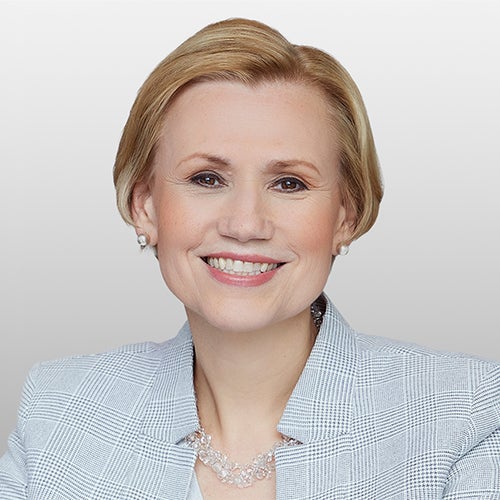In my Nov. 1 blog, Nine things to watch this week, I wrote, “I keep hearing that the stock market doesn’t care any more about COVID, that we have moved past it. That’s a luxury we can have when COVID infections are in abeyance. However, COVID remains a significant market and economic issue…”. The two issues I have remained concerned with is the potential for continued disruption to supply chains, especially in countries with zero tolerance policies towards COVID, and the potential for a “worst case” scenario — the emergence of a COVID variant that is resistant to existing vaccines. Well, the stock market seemed to once again care about COVID last Friday, when stocks sank globally on news of the emergence of the Omicron variant. And so it’s time for economists and strategists to once again play arm chair epidemiologists in addition to their day jobs.
What happened?
A new variant, the Omicron variant (B.1.1.529) has emerged. It was first identified in South Africa but it is not clear where it originated — South Africa was likely the first to detect it simply because it performs a very sophisticated level of genome sequencing relative to many other countries. Confirmed Omicron cases have been found in a number of places around the world, including Israel, Belgium, Hong Kong, the United Kingdom, Germany, Italy, Czech Republic, and Canada.
Omicron was labeled a “variant of concern” by the World Health Organization (WHO) last Friday, Nov. 26. There are two different designations that the WHO gives to variants it wants to follow closely: a “variant of interest” and the more serious “variant of concern.”
- A “variant of interest” is a variant with genetic changes that can impact the way the virus is transmitted, its severity, its response to immunity, and/or its response to treatments. In addition, variants of interest have been identified as an emerging risk to global public health — for example, by causing significant community transmission in multiple countries.
- A “variant of concern” meets the definition of a “variant of interest” and is associated with at least one of the following: 1) an increase in transmissibility or detrimental change in COVID-19 epidemiology, 2) an increase in virulence or change in clinical disease presentation, 3) a decrease in effectiveness of public health and social measures or available diagnostics, vaccines, or therapeutics.
It’s important to note that the omicron variant is not the first variant to receive this more serious label. Four other variants are also designated “variants of concern” by the World Health Organization: Alpha, Beta, Gamma and Delta.1 There are also two variants that are designated “variants of interest” by the WHO: Lambda and Mu.1
What do we know about Omicron?
Health officials have noted that the Omicron variant is more concerning than the Delta variant because of its unique structure: It has far more spike protein mutations than Delta. The concern is that these mutations could render it both more transmissible and more severe, but it’s not yet clear whether this is the case.
Maria Van Kerkove of the WHO said Omicron’s large number of mutations “have some worrying characteristics,” but more work needs to be done to assess what this means.2 In the meantime, the World Health Organization warned on Nov. 29 that the global risk from this variant is “very high.”3 While it appears to be very contagious, there is reason to believe it might be a less severe variant, as one initial report suggests that Omicron might result in benign symptoms. According to Dr. Angelique Coetzee, who chairs the South African Medical Association, she has had a number of patients with the Omicron variant whose symptoms were “different but mild.” However, she is very concerned about the elderly and those who are immune compromised: “What we have to worry about now is that when older, unvaccinated people are infected with the new variant, and if they are not vaccinated, we are going to see many people with a severe [form of the] disease.”4
What has the response been?
Government leaders have responded rapidly to this new variant. More than 20 nations have imposed travel bans on certain countries. And the governor of New York State has declared a “state of emergency” because of the rise in COVID-19 infections and the threat of this new variant.
We did hear some good news – that work has already started on understanding the Omicron variant. Pfizer and BioNTech, Moderna, Johnson & Johnson, and AstraZeneca have all said they are already testing their respective vaccines against the new variant. Pfizer and BioNTech announced that they should be able to quickly alter their vaccine so that it can protect against the Omicron variant: “In the event that [a] vaccine-escape variant emerges, Pfizer and BioNTech expect to be able to develop and produce a tailor-made vaccine against that variant in approximately 100 days, subject to regulatory approval.”5
In addition, some major economies are stepping up vaccination booster deployment, which should help reduce transmission of Delta and other variants, and possibly Omicron if the existing vaccines are effective against it. The UK, for example, moved on Nov. 29 to make available mRNA booster shots for all adults and halve the time lag between a second and third booster shot to three months. There is also some prospect that vaccine reluctance may diminish with the emergence of a potentially more infectious or more virulent variant, as happened in some countries following the emergence of the Delta variant.
Negotiations are in the works for a global pandemic treaty which may someday help avoid some of the international challenges that have hampered vaccine deployment and cross-country coordination of efforts to slow the spread of the virus. Pandemic prevention and management are likely to continue to be major economic issues as urbanization continues across many emerging market countries with high rates of population growth and rapid development.
How have markets reacted?
Investors panicked on Friday, arguably assuming the worst. Stocks sold off, with the VIX volatility index surging more than 50%. Oil prices dropped dramatically, and cryptocurrencies sold off as well. However, Friday was a thin trading day for stocks (due to the US Thanksgiving holiday) which likely exacerbated the sell-off. Global stocks have had more mixed results thus far today (Nov. 29), with US and European equities holding up better than Asian equities.
What are the investment implications?
Investors fear a worst-case scenario variant that could send many parts of the world back to the dark days of 2020, with significant lockdowns if existing vaccines don’t protect against this variant and/or it is far more contagious than the Delta variant. With many major economies now experiencing cold weather, and some European countries already imposing lockdowns before the discovery of this variant, this would only add to problems and exert downward pressure on stocks, especially more cyclically sensitive equities. In this scenario, we would expect the mid-2020 investing playbook to re-emerge, complete with accommodative monetary policy, real bond yields falling, and growth stocks outperforming value stocks.
What is our outlook on the situation?
We recognize that it will likely take weeks before we will receive enough information on the Omicron variant to know whether it is the major threat that markets seem to fear it is. We need to hear more from medical experts, especially with regard to whether existing vaccines can effectively protect against it. Until then, we should be patient and not allow emotions to dictate investing decisions.
There is certainly the potential for additional market drops and heightened volatility in coming weeks as a result of this variant, especially given all the uncertainty surrounding it, as well as the aggressive stance that many government leaders appear to be taking toward it. Though we believe markets are unlikely to fall as much as in early 2020, the recent strong gains in cyclical assets suggest that there is room for a decent correction. In our opinion, the biggest negative impact would likely be in assets such as industrial commodities, equities, and real estate. Given that Europe was already in the midst of a new COVID wave and lockdowns, and many of the discoveries of the new variant are in Europe, we suspect European equities could be among the worst performers (with more declines possible, on top of the approximately 4% decline for some major European indices6 seen on Friday).
We believe the most vulnerable sectors are travel and leisure (including hospitality), basic resources, and general retail. Sectors that may be better protected, in our opinion, include technology, health care and utilities. Among equity factors, we would expect low volatility to perform the best.
Looking at broader asset categories, we believe that government bonds, gold, investment grade credit and cash may perform the best. Among currencies, it is usually the yen and Swiss franc that have performed the best under these circumstances.
Having said that, we would again stress that investors not panic. Recall that last year, those who abandoned stocks when the market fell in March 2020 missed an impressive rebound in the year that followed. We firmly believe that even if existing vaccines don’t protect against Omicron and it is more transmissible and virulent than other vaccines, it is not a time to panic. Pharmaceutical companies have expressed confidence that mRNA technology should enable them to re-engineer their vaccines to protect against this variant – so in our view, this does not mean we are going back to the dark days of 2020.
As for our investment outlook, we would maintain current asset allocations, and view any continued sell-offs as a buying opportunity.
We tend to agree with the emerging consensus that the growth impact of the Omicron variant is likely to be less than the growth impact of prior lockdowns and new variants, because of many economies and sectors have learned to cope with social distancing and work from home practices. However, there are likely to be further sector- and firm-level impacts if lockdowns or other targeted restrictions proliferate.
The inflation impact is ambiguous but probably more skewed toward goods inflation than overall inflation. We anticipate downward pressure on commodity/energy prices would be offset by continuing supply-chain, logistics and labor shortage issues in the production and transport of goods, whose high demand may even be boosted by the spread of Omicron, while services, particularly tourism, leisure and hospitality, may be held back. Goods inflation may also be affected by zero-tolerance policies, lockdowns and travel restrictions in East Asia.
What are the risks to our view?
We are waiting to hear more from medical experts and pharmaceutical companies about the transmissibility and virulence of this variant, as well as the efficacy of vaccines in protecting against Omicron. If needed, progress on the re-engineering of existing vaccines will need to be followed closely.
Until then, we will need to follow stringency and mobility data closely, especially given the critically important holiday shopping season. As was mentioned above, some policymakers have been quick to impose travel bans. For those who are more reluctant to impose lockdowns – ultimately it may be forced upon them if hospitals fill to or beyond capacity. This would be economically problematic and would likely have a negative impact on the stock market and oil prices. In this scenario, we would expect the mid-2020 investing playbook to re-emerge, complete with accommodative monetary policy, real bond yields falling, and growth stocks outperforming value stocks.
In the absence of stringency, it is very important to closely follow mobility. Despite media attention, individuals may choose to continue current levels of shopping and dining out. For example, this past weekend, 110,000 people attended a football game at the University of Michigan despite the news about the Omicron variant, suggesting that people may be unlikely to stay home unless lockdowns are imposed.
The greatest risk to our view is that pharmaceutical companies are unable to develop a vaccine to protect against this variant, but that seems unlikely at this juncture. Even if that were the case, we have developed coping mechanisms that can enable economies to continue to function and avoid the worst of 2020.
With contributions from Paul Jackson, Brian Levitt, David Chao and Arnab Das.






